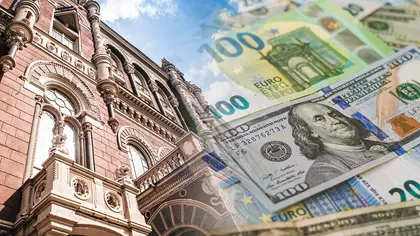On June 21, the National Bank of Ukraine (NBU) increased the exchange rate of the hryvnia to the US dollar by 25%. It now stands at 36.5686 Hr. and will remain fixed.
The NBU said this was due to changes in the fundamental characteristics of Ukraine’s economy during the war and the strengthening of the U.S. dollar against other currencies.
JOIN US ON TELEGRAM
Follow our coverage of the war on the @Kyivpost_official.
“Such a step will make it possible to increase the competitiveness of Ukrainian manufacturers, bring exchange rates closer to different groups of businesses and the population, and support the stability of the economy in wartime conditions,” the NBU stated.
By keeping the rate fixed, the regulator explained that this would ensure price and financial stability – an essential condition for economic recovery.
Fixing the hryvnia exchange rate at 29.5 hryvnias per U.S. dollar at the beginning of the full-scale Russian invasion helped ensure the stable operation of the financial system, but it no longer corresponds to reality. The new official rate set by the NBU will reportedly anchor the economy, add stability in conditions of uncertainty and help maintain control over inflation.
The NBU is unlikely to be able to maintain a fixed exchange rate for the hryvnia for a long period of time and will eventually be forced to reflect the actual market exchange rate. The president of the Kyiv School of Economics, adviser to the head of the President Office of Ukraine, Tymofiy Mylovanov, commented on the NBU’s decision during a briefing at the Ukraine-Ukrinform Media Center.
“Neither the Bank of England, the Bank of Canada, the Federal Reserve System nor the European Central Bank can keep a fixed rate for long when structural changes are underway. The NBU will not be able to [maintain this]. The central bank of any country cannot do so. The NBU will be forced to reflect the actual market rate at some point,” Mylovanov said.
Mylovanov added that after the NBU eventually reverts back to the market rate, it could fix it once again depending on the macroeconomic situation in the country.
“If the markets are working, then there should be a flexible rate. If the markets are not working, there should be regulatory intervention – a lot depends on funding from our international partners. I would recommend a flexible rate, but the fixed rate under constant review is more suitable if the situation is critical,” Mylovanov emphasized.
You can also highlight the text and press Ctrl + Enter



